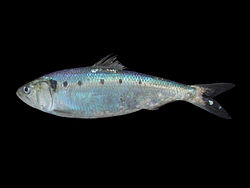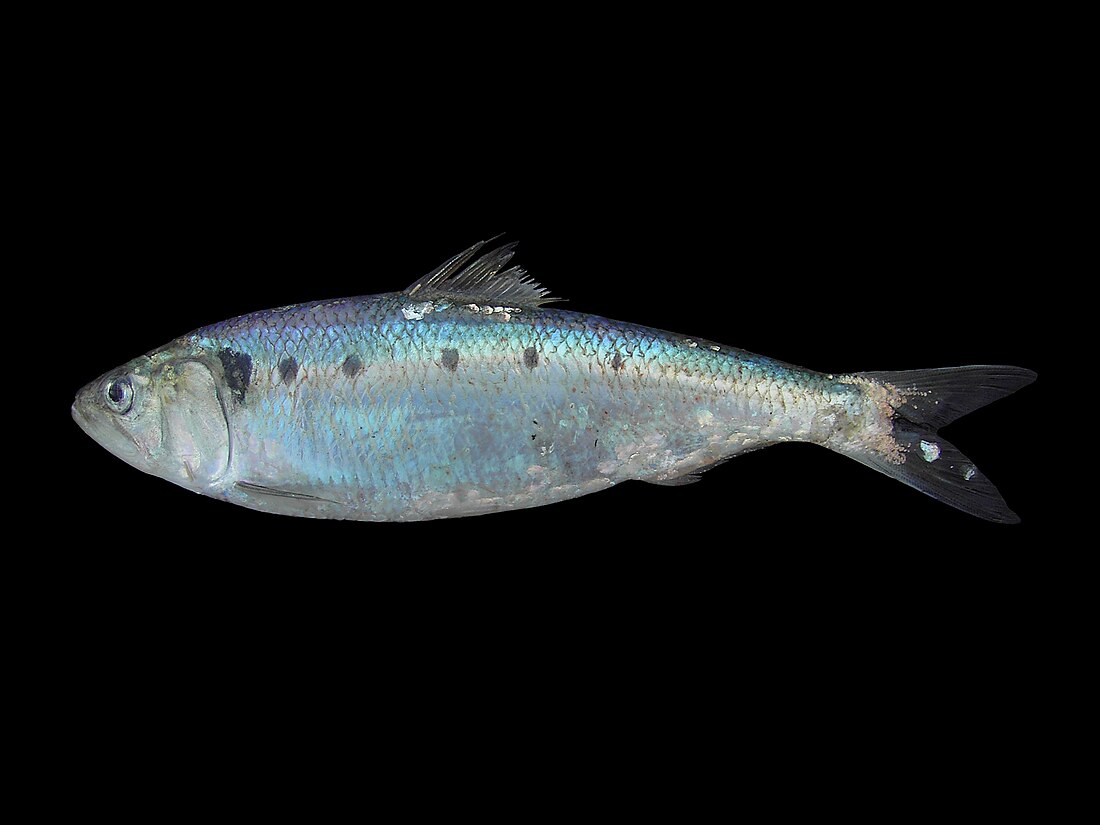Alosidae
Family of fishes From Wikipedia, the free encyclopedia
The Alosidae, or the shads,[2][3][4] are a family of clupeiform fishes. The family currently comprises four genera worldwide, and about 32 species.[5]
| Alosidae Temporal range: Possible Late Cretaceous record | |
|---|---|
 | |
| Twaite shad, Alosa fallax | |
| Scientific classification | |
| Domain: | Eukaryota |
| Kingdom: | Animalia |
| Phylum: | Chordata |
| Class: | Actinopterygii |
| Order: | Clupeiformes |
| Suborder: | Clupeoidei |
| Family: | Alosidae Svetovidov, 1952[1] |
| Genera | |
|
see text | |
The shads are pelagic (open water) schooling fish, of which many are anadromous or even landlocked. Several species are of commercial importance, e.g. in the genus Alosa (river herrings), Brevoortia (menhadens), and Sardina. The Alosidae were previously included in the herring family Clupeidae.
Genera
Alosidae contains the following 4 genera:[6]
- Alosa H. F. Linck, 1790 (Shads)
- Brevoortia Gill, 1861 (Menhadens)
- Sardina Antipa, 1904 (European pilchard)
- Sardinops C. L. Hubbs, 1929 (Blue pilchard)
The following fossil Alosidae are also known:[7]
- †Eoalosa Marramà & Carnevale, 2017 (early Eocene of Italy)[7]
- †Moldavichthys Baykina & Schwarzhans, 2017 (mid-late Miocene of Moldova)[8]
- ?†Pugliaclupea Taverne, 2004 (Late Cretaceous of Italy)
- †Sanalosa Bienkowska-Wasiluk, Granica & Kovalchuk, 2024 (Oligocene of Poland)[9]
The oldest member of the group is Pugliaclupea from the Campanian of Italy, but its placement in the Alosidae appears to be on weak grounds. Otherwise, all other members of the family are only known from the Eocene onwards.[7] There appears to have been a significant center of endemism for the alosids and other clupeoids in the Paratethys.[8] The freshwater †Chasmoclupea from the Oligocene of Egypt may also be related to the Alosidae.[10]
See also
- The Shad Foundation
- Shad Planking, a Virginia political gathering featuring the consumption of American shad
References
Wikiwand - on
Seamless Wikipedia browsing. On steroids.
